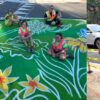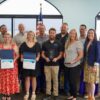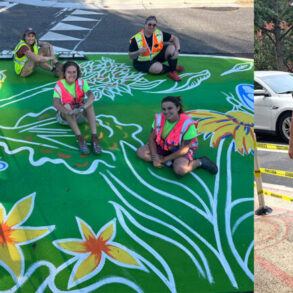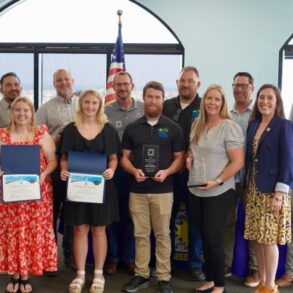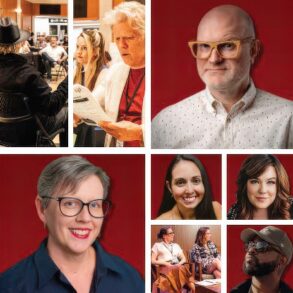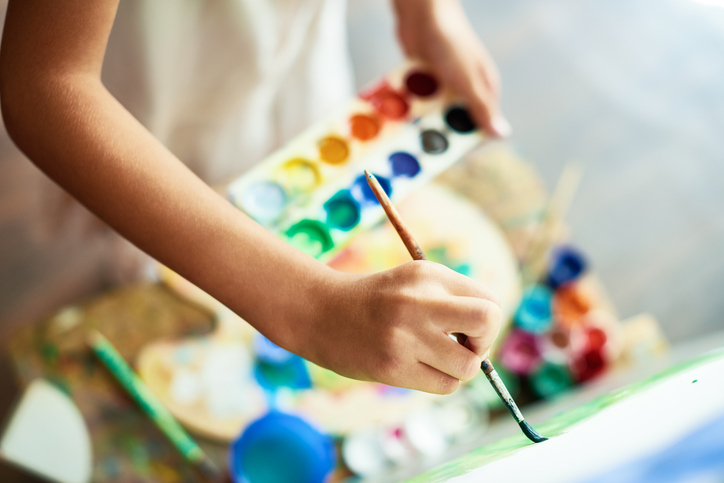
In a world where climate change demands urgent action, educating future business leaders on sustainability is vital. Through a transdisciplinary approach, we integrate artistic expression into an introductory macroeconomics course project, Out of the Curve, challenging students to look beyond traditional metrics such as GDP and economic growth. In collaboration with the School of Creative Arts, we cultivate innovative and critical perspectives on pressing societal challenges.
By using art as pedagogy, we employ artistic methodologies to deepen business students’ understanding of sustainability and climate change. The integration of art into business education is not merely an addition of aesthetics but an enhancement of the learning experience. Through collaboration with interdisciplinary artist Michelle Fung, whose work vividly explores pressing environmental issues, we introduce students to unique perspectives on the challenges of our times. In these sessions, students actively engage in creating art themselves, such as participating in collaborative activities such as passing on and adding to each other’s drawings, which fosters creativity, teamwork and skill development.
Fung’s dystopian narrative set in the year 2084 serves as a compelling tool to challenge students’ thinking, encouraging them to ponder the potential future implications of unchecked consumption and climate change. This narrative acts as a catalyst for discussions on sustainability, prompting students to reflect on their roles as future business leaders in shaping a more sustainable world.
Art-based pedagogy can enhance emotional intelligence and self-awareness – skills often overlooked in traditional business education, according to research. Engaging with art allows students to explore complex social issues, fostering empathy and understanding of diverse perspectives. These skills are crucial for developing leaders who can navigate the complexities of the world with sensitivity and insight.
By including art workshops in the traditional economics curriculum, we also provide experiential learning opportunities. Activities such as drawing workshops, museum visits and participatory art projects enhance collaborative learning and critical thinking skills. This transdisciplinary approach not only broadens students’ perspectives on sustainability but equips them with essential skills for addressing real-world challenges.
Also, incorporating art into the curriculum stimulates creative thinking, essential for problem-solving and innovation in business settings. Art serves as a medium for students to express ideas and explore new concepts, leading to innovative solutions for real-world challenges. By fostering a culture of creativity, we lay the groundwork for future leaders who can think “out of the curve” and drive sustainable innovation.
The impact of integrating art into business education extends beyond academic benefits. Students report a greater sense of personal growth, noting increased confidence and inspiration. While the initial response to incorporating art was mixed, with some students excited and others reluctant, the flexibility of our large class allowed students to explore various art forms and sustainability topics. This approach empowered even those initially hesitant to become engaged during the sessions. In the end, the feedback was overwhelmingly positive, reflecting a transformation in students’ perspectives and appreciation of creative expression.
One student said: “The teacher carefully teaches and encourages each of our works with artistic eyes. She does not say that the works are not good, but speaks to the depth of the artworks. This gave me more confidence and more ideas on how to draw.” Another student noted: “In this workshop, I have been given the opportunity to share and express my feelings through drawing, and also to be more aesthetic, enabling me to become a more all-rounded person.”
The workshop also provided a platform for students to transform ideas into drawings, enhancing their communication skills, as one participant reflected: “This workshop […] enables me to understand the power of art. Expressing an idea is never limited to literature and linguistics; it could, however, be reflected by a picture. It is indeed an even better way to deliver a concept, especially those that are abstract and complex, as pictures reflect situations.” This process of visual expression enhances both understanding and communication skills.
The collaborative environment fostered by the project allowed students to explore personal and societal issues creatively. One student remarked, “During the workshop, I was able to doodle and share art pieces with classmates. This process ultimately enhanced my communication skills as well as my understanding of teamwork. Knowing how to cooperate with others surely makes work easier and allows us to meet more new friends.”
Integrating art into business education has proven a powerful tool for inspiring future climate champions. By fostering creativity, empathy and innovative thinking, we lay the foundation for a new generation of leaders who prioritise sustainability and societal impact. This project exemplifies the potential for transdisciplinary approaches to redefine business education and address global challenges. As students navigate the complexities of the modern world, the skills and perspectives gained from this project will empower them to drive meaningful change in their communities and beyond.
Integrating art into business education can be a transformative experience. Here are some key strategies for educators looking to implement similar initiatives:
- Participate actively: Attend workshops alongside your students to understand their experiences first-hand. This involvement allows you to monitor progress and make necessary adjustments, fostering a shared journey of learning and growth.
- Provide diverse choices: Encourage exploration of various art forms to accommodate different interests and talents. This freedom enhances engagement and allows students to express themselves in ways that resonate with them.
- Emphasise communication: Incorporate artist statements and presentations as part of the curriculum. Art is a powerful communication tool and these elements help students articulate their thoughts and develop storytelling skills, even if they aren’t naturally inclined towards artistic expression.
- Collaborate with artists: Clearly communicate your educational objectives to collaborating artists, while giving them the freedom to employ their unique methods to inspire students. This balance ensures that the art experience aligns with educational goals while maintaining creativity.
- Encourage discovery: Avoid directing students too much. The essence of art lies in discovery and exploration. Allow students to find their own paths and insights through the creative process, fostering innovation and personal growth.
Ryan Man is associate dean (undergraduate studies) at the School of Business, Hong Kong Baptist University.
If you would like advice and insight from academics and university staff delivered direct to your inbox each week, sign up for the Campus newsletter.
This post was originally published on this site be sure to check out more of their content


